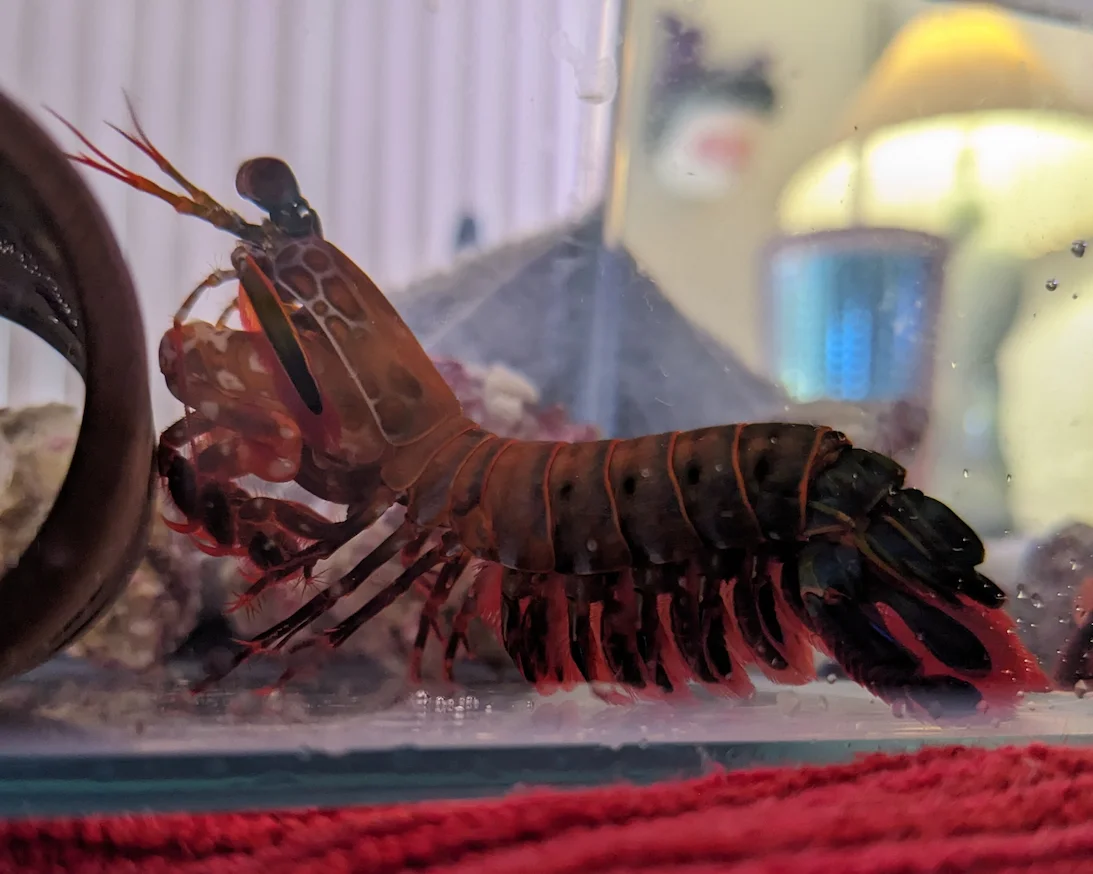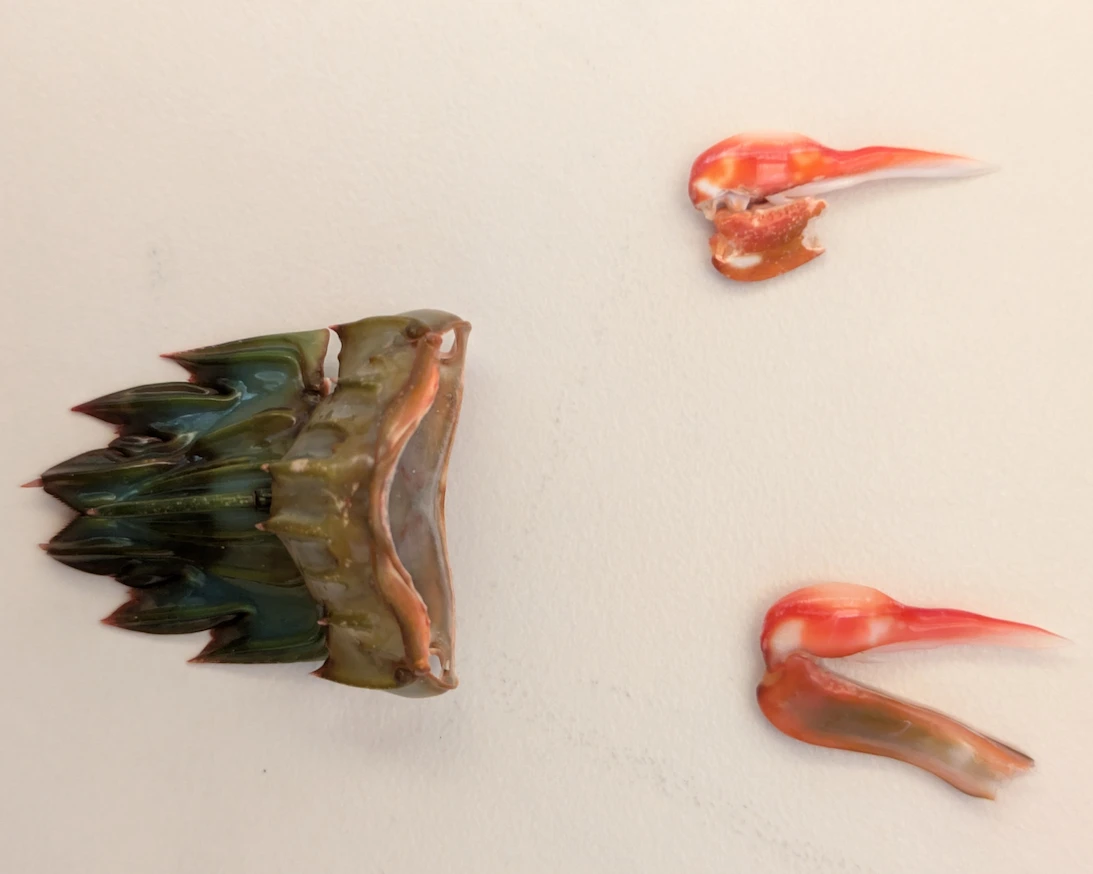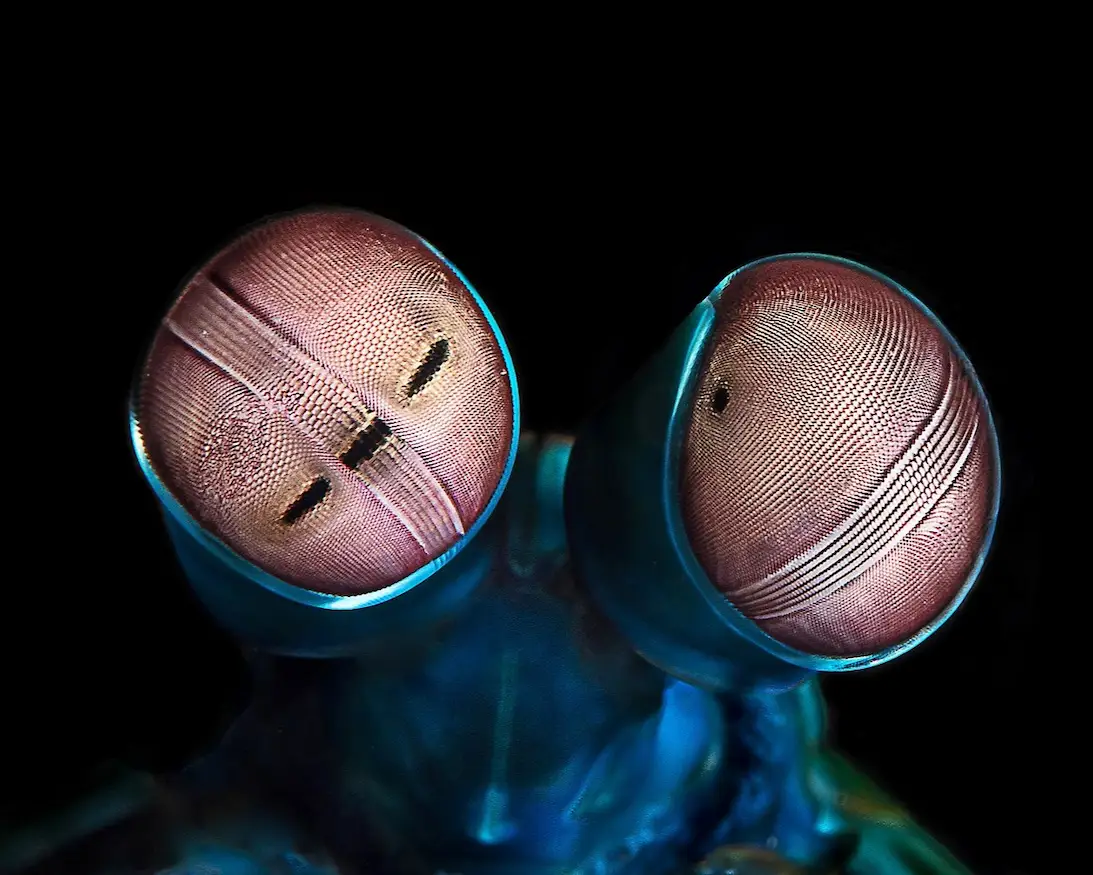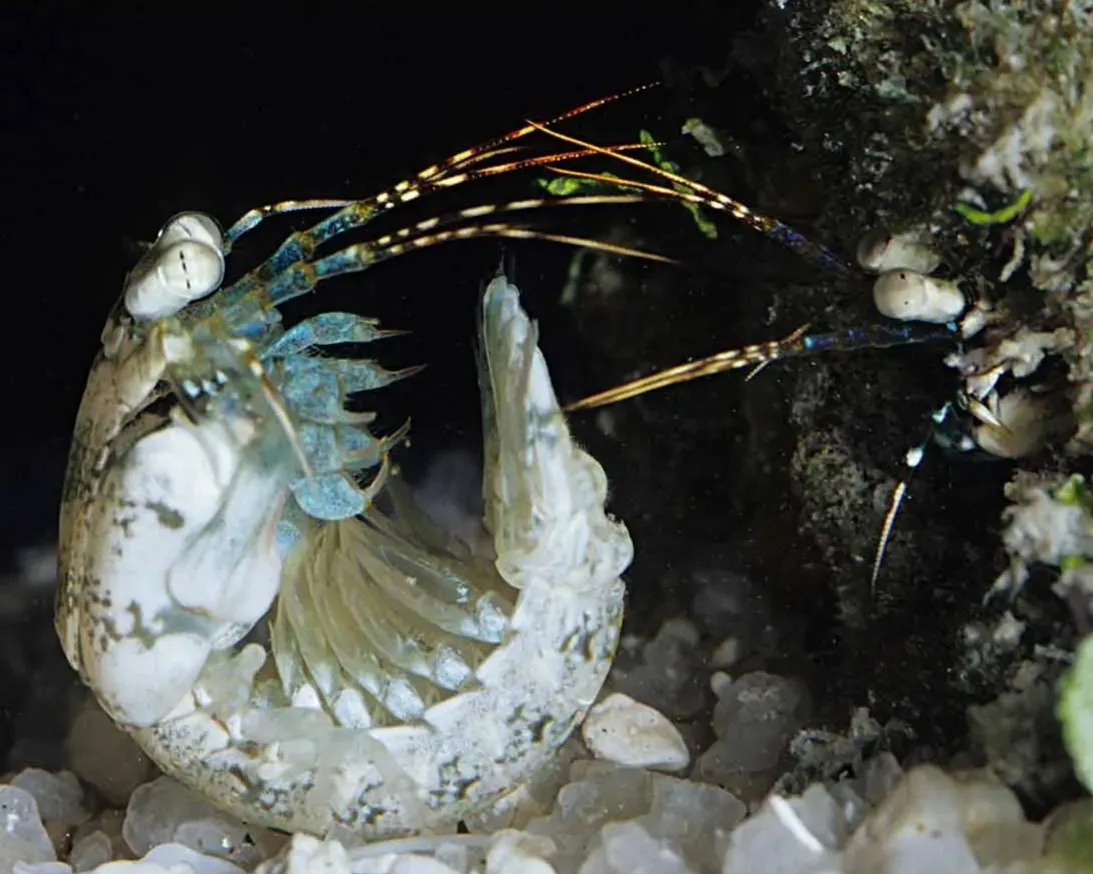STOMATOPODS
More commonly known as mantis shrimp, stomatopods are a diverse and widespread order of marine crustaceans that includes over 500 species. Most live in shallow tropical waters, though some are found in deeper and more temperate areas. Mantis shrimp aren't shrimp! Despite some physical resemblance, they are only distantly related to other modern crustaceans like as shrimp and lobsters.
If you're interested in keeping mantis shrimp in a home aquarium, you should know about Dr. Roy Caldwell. Though retired, Roy has been a leading expert in the field for decades and has provided extensive resources for the amateur stomatopod enthusiast throughout the years. Visit Roy's List or view the pages below for additional information and links.
NOTE: PAGES UNDER CONSTRUCTION. ADDITIONAL INFO TO BE ADDED SOON.
ANATOMY & LIFECYCLE
Morphology varies drastically between species, however all stomatopods share common anatomical features. Adults can vary dramatically in size, from just a few millimeters to over 40 cm. Stomatopod lifecycles vary in length, and each animal undergoes several distinct stages between hatching and maturity.
More on external anatomy »
PREDATORY & DEFENSIVE MORPHOLOGY
As some of the most efficient crustacean predators, stomatopods have evolved highly specialized anatomical features for the capture and consumption of prey. Though there is significant overlap between the capabilities and hunting habits of various species, each has evolved to fill their own ecological niche - often becoming the dominant predator in their environment.
More on morphology »
VISION
Stomatopods have (arguably) the most versatile vision in the animal kingdom. Each eye sees in stereo and is situated on a highly mobile stalk. Stomatopods have up to sixteen visual pigments, and can see ultraviolet and infrared light. They make heavy use of polarization, and to date are the only animal on earth that has been shown to detect circularly polarized light.
More on vision »
BEHAVIOR
Stomatopods are widely known for their "charismatically aggressive" dispositions. Despite their solitary and reclusive nature, they are capable of swift and devestating attacks while capturing prey or defending their home. The high abundance of stomatopods in suitable environments creates ample opportunity for conspecific interactions, and they have evolved a suite of complex social behaviors that govern these interactions during combat, molting, and reproduction.
More on behavior »
EVOLUTION
Fossil records place ancient ancestors of modern stomatopods as early as the Paleozoic era. Early ancestors of modern stomatopods diverged from other crustaceans around 340 million years ago, and separated into the seven superfamilies seen today. Evidence suggests spearing evolved first, and smashing evolved much later (around 130 million years ago). New species of stomatopods are still being discovered as recently as 2024.
More on evolution »
CARE
Stomatopods are a controversial topic in the aquarium hobby, but they can make for fascinating and interactive pets when cared for properly. Whether you're interested in keeping a specific species or found an unexpected hitchhiker in your tank, caring for and observing these critters can be a rewarding and educational experience. It is critical that you do research and plan ahead before acquiring any animal.
More on care »





